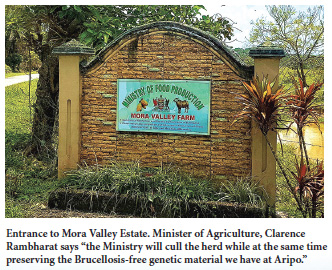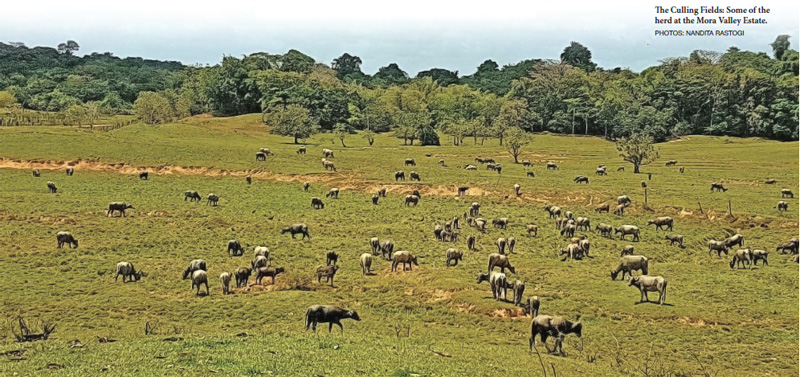 |
 |
 |
|
April 2018
|
“It is widely accepted that despite its initial presence in T&T since the 1980s and its rapid increase in the mid-1990s little was done towards the eradication of Brucellosis. I am at pains to differentiate between the eradication of Brucellosis and the eradication of Brucellosis-positive animals. One will lead to the other, but this is in no way a destruction of the genetic material or an abandonment of livestock development. On the contrary, tackling Brucellosis frontally is a mandatory part of developing the sector,” he said in an email exchange. He said that a PAHO/WHO Report on Brucellosis in Trinidad and Tobago, dated April 30, 2013, had inputs from a team at the Ministry of Agriculture, which included the Permanent Secretary, the Chief Technical Officer, the lead of the Livestock Division and the Chief Veterinary Officer, and that representatives of the Ministry of Health and the Livestock Board also participated. He said that the Mora Valley herd “is the highest contributor of Brucellosis numbers in Trinidad,” (Estimates are that the herd numbers less than a thousand head, but it is difficult to verify because even perimeter fencing has been compromised.) The Minister identified five items as the “key takeaways” from the Report:
He also identified the steps he had taken since he assumed office in 2015.
When I asked him about the State’s plan, he said he has articulated the position several times. “We cannot develop Buffalypso without addressing the high level of Brucellosis positives in the largest herd [at Mora Valley]. So, the Ministry will cull the herd while at the same time preserving the Brucellosis-free genetic material we have at Aripo. At the same time we will shift our attention to using one of the farms – no decision yet on which one – to expand the number of Brucellosis-free animals we have available. Any further policy decision will be dependent on the interest of private farmers in Buffalypso for their own herds.” He also explained that, “From a policy perspective the genetic material is important to the country and this is being addressed. At the same time, for the long-term development of Buffalypso, we have to reduce the number of Brucellosis-positive animals in accordance with expert advice and develop Brucellosis-free herds.” It is not a new plan, but what will make the difference is the will to implement it. Few are hopeful. They’ve heard it too many times before.
|


 The current Minister of Agriculture, Clarence Rambharat, has inherited this unpleasant state of affairs and he knows that it has come down to making the best of a terrible situation.
The current Minister of Agriculture, Clarence Rambharat, has inherited this unpleasant state of affairs and he knows that it has come down to making the best of a terrible situation. 